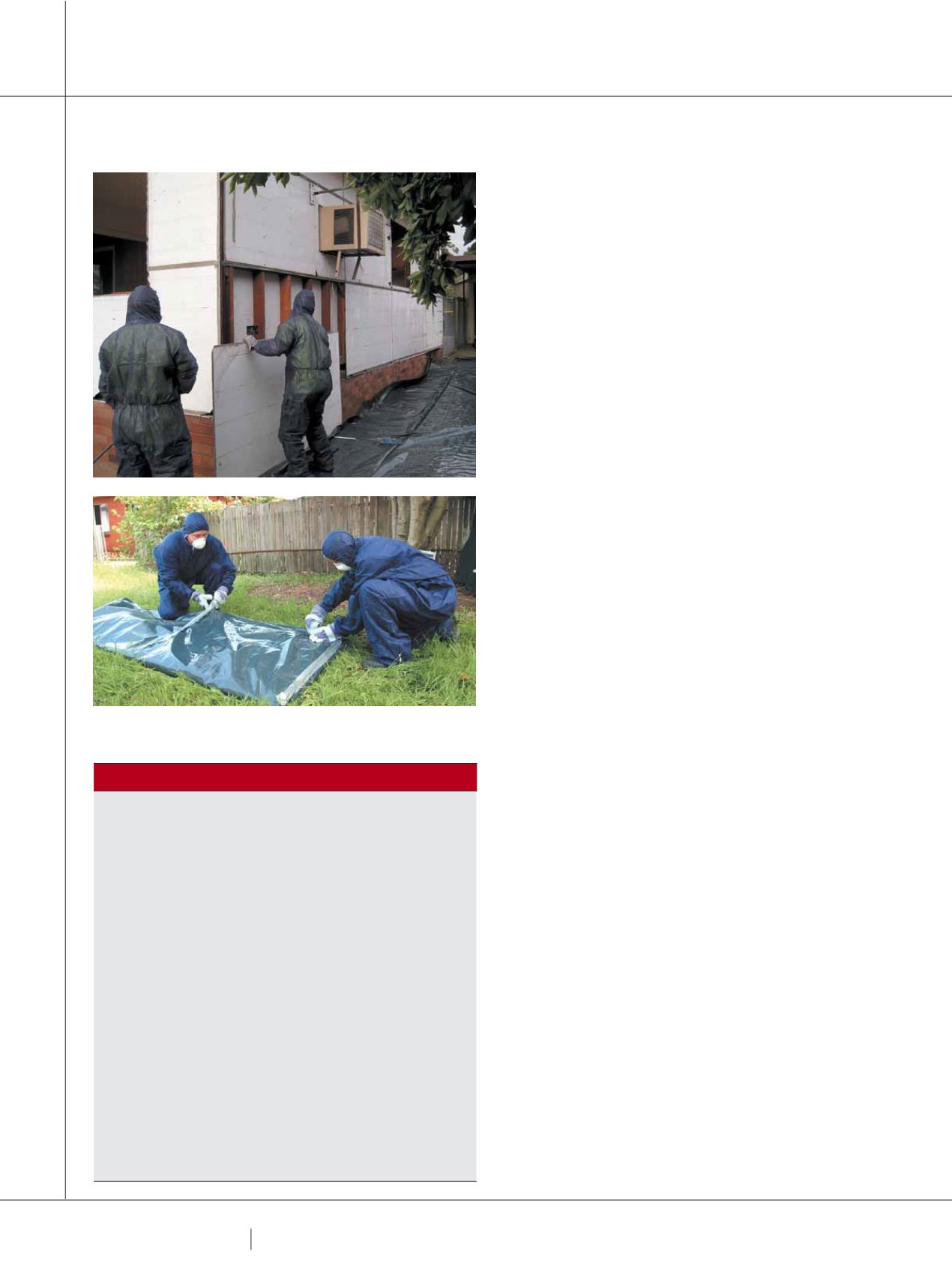

6 2
PLUMBING CONNECTION
SPRING 2015
NSW ASBESTOS REGULATIONS
In NSW, for example, the government has regulations in force to protect
you when you are working with asbestos.
These requirements include:
∫
It is illegal to dispose of asbestos waste in domestic garbage bins.
∫
It is illegal to re-use or recycle asbestos products.
∫
It is illegal to dump asbestos products.
∫
Power tools should not be used unless the dust is captured or
suppressed.
∫
It is illegal to waterblast asbestos cement sheets (fibro).
∫
Only licensed asbestos removalists can remove asbestos of 10m² or
more (10m² is equivalent to the size of a typical bedroom wall in an
average home or about the size of a small bathroom or an outside
toilet or shed.)
∫
Only licensed friable asbestos removalists are able to handle or
remove friable asbestos.
∫
Licensed removalists are to notify WorkCover of asbestos removal
five days before removing friable or greater than 10m² of non-friable
asbestos.
∫
All licensed contractors have to be able to give you a copy of their
licence.
∫
It is illegal to bury asbestos on your own property.
∫
All asbestos must be legally disposed of at a lawful landfill site (to
find a site near you, visit:
www.environment.nsw.gov.au).
∫
Local councils may also have policies regarding the removal of
asbestos so visit your council’s website to find out what’s required.
TOOL BOX TALK
behind wall and floor tiles, in cement floors, internal and
external walls, ceilings and ceiling space (insulation), eaves,
garages, roofs, around hot water pipes, fences, extensions
to homes, garages, outdoor toilets, backyard and farm
sheds, chook sheds and even dog kennels.
This means plumbers need to be on high alert while
working in older buildings.
Asbestos products can also be found buried beneath and
around homes leftover from the original construction when
it was common practice for builders and labourers to bury
broken asbestos materials on building sites which can now
be exposed when digging, gardening or redeveloping land.
In many coastal regions, ‘weekenders’ were often built
from fibro (bonded asbestos cement sheeting) as low-
cost holiday homes. In rural settings many buildings were
constructed from fibro as a cost-effective means of housing
farm equipment and stock. It was also widely used to
construct ‘sleep-out’ additions to farmhouses and workers
accommodation.
ASBESTOS 101
Asbestos building materials are described as either
‘friable’ or ‘non-friable’.
Friable asbestos is any material containing asbestos and
is in the form of a powder or can be crumbled, pulverised or
reduced to powder by hand pressure when dry.
Friable asbestos was mainly used in industrial
applications.
Non-Friable asbestos is any material (other than friable
asbestos) that contains asbestos. Non- friable asbestos
cannot be crumbled, pulverised or reduced to a powder by
hand pressure when dry.
Common uses for non-friable asbestos in buildings include:
flat (fibro), corrugated or compressed asbestos cement
sheets; water, drainage and flue pipes; and floor tiles.
Dr Mike Lindsay, the acting director of environmental
health for WA Health says most people mistakenly believe
asbestos is only found in roofs, fences or walls in older style
houses. But, products containing asbestos can also include
paper backing material on sheet linoleum, backing panels in
meter boxes and vinyl floor tiles.
“These types of products pose little risk to health when
they are in good condition and undisturbed. But, people
need to take precautions when they are renovating or doing
maintenance work to prevent asbestos fibres being released
into the air,” he says.
“Asbestos containing products can be difficult to identify
just by looking at them. So, if in any doubt, treat it like it is
asbestos — just to be on the safe side.”
WA Health’s recommends:
∫ If doing maintenance, or renovating a house built before
1990, be aware it could have asbestos containing
products and treat them with caution.
If you’re in any doubt, treat it like it is asbestos — just to be
on the safe side.
















